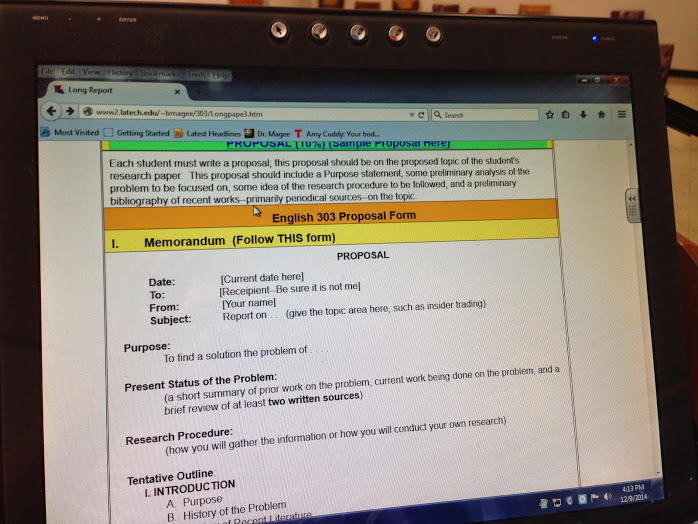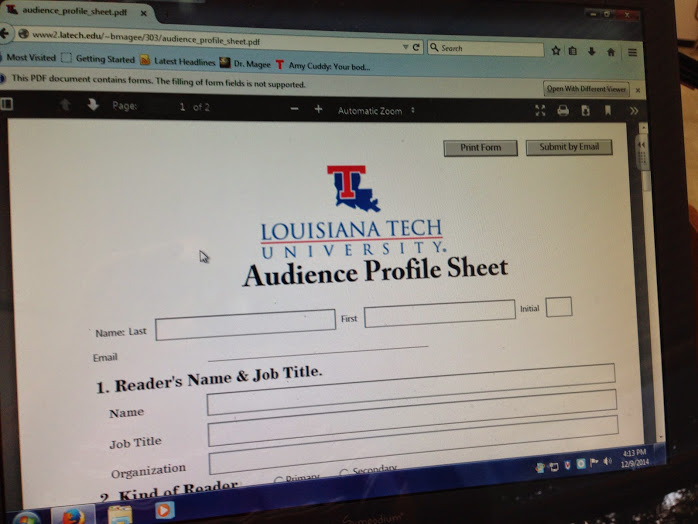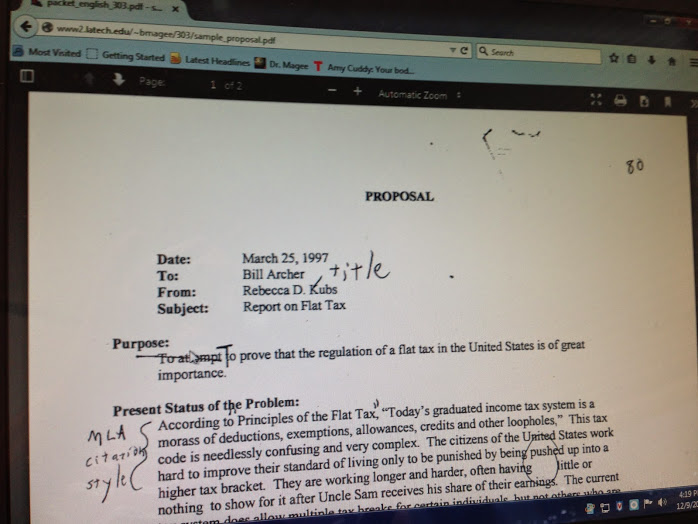 Home Page
Home Page Lecture 01B
(Week 01, Period B)
- Lecture.mp3
- Listen in iTunes
- Listen on Stitc21her
-

I. The Proposal
The Proposal has three components. Make sure that you
complete them all for full credit. Be sure to complete all
the items in the checklist when you turn the assignment in.
During this part of the lecture, review the proposal guidelines:







II. Research
There are two basic forms of research: primary and
secondary.
- Primary research is research you conduct yourself. It varies depending on your discipline. For a psychologist, it might be an experiment on volunteers, or a survey. In the sciences, it would be an experiment. In history, it involves finding the oldest source for an event.
- Secondary research is learning about somebody else's
research. It is the starting place for research, since
you don't want to replicate somebody else's discovery.

I'd like you to research from the following sources.
- At least one definition from the Oxford English Dictionary. Log in with your Tech email name and password.
- Use journal articles from the Tech database. I suggest
starting with JSTOR,
since it covers a range of subjects and has full articles in
its database. Log in the same way as with the OED. I've
converted a library handout
to a webpage. This handout
tells you how to do research using our library resources.

- You can get your government documents from USA.gov. You can also find
state and local documents there. For other countries,
you'll need to go to their governments' web sites.

You can also find sources through Google, but you need to be very careful about the sources, since there is no uniform reliability to the internet. Look, for example, over the bibliography of the Mad Cow Disease report.


“About Prions.” The Prion Institute. Alberta Innovates Bio Solutions, n.d. Web. 5 Apr. 1996. <http:// www. prioninstitute.ca/ index.php? page= webpages& menucat=35& id=9&action= displaypage&side=1>.
This web page is from the Prion Institute in Canada
(prioninstitute.ca/). You can find out more about the
Institute on their About page. Most institutions have
them.

“Annual Percentage Change in Weekly Spending on Selected Meat Products.” Nielson. 5 Jan. 1996. Web. 11 Apr. 1996. <http:// www.nielsen.com/ home/ press/ uk/ beef_2.gif>.
The Nielsen Company is best known for tracking ratings for television shows. Their whole business model depends on their reliability. We thus are on pretty solid ground trusting their chart.

“BSE: Statement by Spongiform Encephalopathy Advisory Committee (SEAC) of 24 March 1996.” MAFF: Ministry of Agriculture, Fisheries and Food, UK. 7 Oct. 1996. Web. 3 Apr. 1996. <http:// web.archive.org/ web/ 19970710145324/ http:// www.maff. gov.uk/ animalh/ bse/ seac2.htm>.
This is a statement from the United Kingdom (English) Ministry
of Agriculture during the middle of the Mad Cow Disease
Crisis. The Ministry of Agriculture was focused on
reassuring the public and keeping up sales of beef. So do
we trust them?

Calman, Kenneth. “CJD and Public Health.” Department of Health. 2 Feb. 1996. Web. 8 Apr. 1996. <http:// www.coi. gov.uk/ coi/ depts/ GDH/ coi6738b.ok>.
This is another statement by the UK government, but this time
it's the Dept of Health. Govt agencies don't always agree
with each other, so we'd need to see how they line up with the
Ministry of Agriculture.

“Creutzfeldt-Jakob Disease.” University of Iowa Radiology. University of Iowa, 12 July 1995. Web. 29 Mar. 1996. <http:// web.archive.org/ web/ 19961203055353/ http:// indy. radiology. uiowa.edu/ Providers/ TeachingFiles/ CNSInfDisR2/ Text/ 238.html>.
This is a microscopic image of a slide with part of the brain
of somebody with CJD. It is hosted at the University of
Iowa Medical School. Generally we assume that the doctors
who set up the site want their students to know what the brain
of somebody with CJD looks like, so we generally trust the site.

Hueston, Will, and Harley Moon. “Questions and Answers About Bovine Spongiform Encephalopathy (BSE) from The National Cattlemen’s Beef Association.” Texas A&M Veterinary Medicine & Biomedical Sciences. 21 Mar. 1996. Web. 29 Mar. 1996. <http:// web.archive.org/ web/ 19970221192535/ http:// www.cvm. tamu.edu/ fs_bse.html>.
This page was originally posted by the National Cattlemen’s
Beef Association. What viewpoint do you think they will
take toward the crisis?

“A Mad, Mad, Mad, Mad World.” Living Marxism. 24 Feb. 1996. Web. 8 Apr. 1996. <Http:// www.junius. co.uk/ LM/LM87/ LM87_mad. html>.
The source for this page is Living Marxism. How
will their viewpoint differ from the National Cattlemen’s Beef
Association? All these sources have some
perspective. We need to take that into account when we
weigh the value of their message.

Home Page
